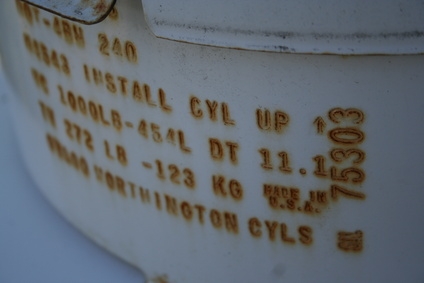
It is possible to use propane as fuel for natural gas appliances. The main difference is that propane tanks have a different size opening from the nozzle on the appliance. Because this is a common endeavor, many manufacturers offer alternative nozzles for simple conversion to propane, but not all do. If there isn't an alternative nozzle or it was lost, you may be able to replace this orifice with a simple trip to an appliance center, which should sell the nozzle. A contractor is not required for this simple conversion.
Read the manual for your appliance and check whether the manufacturer included an alternative nozzle. For instance, most kitchen ranges will have another orifice screwed into it just beneath the top of the range. Contact an appliance center if there is no alternative nozzle. Make sure to provide the make and model of your appliance.
Find the nozzles that must be replaced on your appliance.
Shut off the gas line to your appliance.
Take your wrench or pliers and remove the orifice. The tool you will require depends on the kind of appliance you own. If your appliance has a hex nut, make sure you only turn the one that is attached to the nozzle, not the one affixed to the appliance.
Clean the connection and the threads of your nozzle with the toothbrush. Do not dip the toothbrush into anything.
Take the Teflon tape and wrap it around the threads of the appliance three times.
Use the pliers or wrench to screw in the propane nozzle, ensuring you do not accidentally twist the part affixed to the appliance.
Turn the knob pointing toward "NAT" until it points to "LP."
Turn on the gas line.
Make a mixture of half a cup of water and two tablespoons of dish soap. Mix until suds rise. Put some of the mixture onto every connection that you changed. You will know there is a leak if you see a bubble increasing in size. If this is the case, shut off the gas line and remove the Teflon and nozzle. Repeat steps 5 through 9 and test it again until the bubbles do not grow.